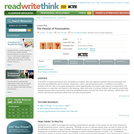
Are mummies pieces of history, or the sacred remains of human ancestors?
- Subject:
- English Language Arts
- Material Type:
- Homework/Assignment
- Author:
- Kristin Robinson
- Date Added:
- 01/03/2020

Are mummies pieces of history, or the sacred remains of human ancestors?

Natural High is a non-profit organization that focuses on the power of storytelling to transform lives. They engage storytellers who kids admire and trust and work with these influencers to create free and impactful content for educators and parents.The activities are designed to develop student understanding about the consequences of drug and alcohol abuse and also to support students in learning and practicing strategies to make healthy decisions. The evidence-based program is used in all 50 states and makes use of current scientific findings on youth behavior, brain development, social norming, and substance abuse prevention.This resource highlights activities in the Understanding the Consequences of Drugs and Alcohol area of focus. Visit the Natural High website at https://www.naturalhigh.org/ for additional materials.

Using published writers' texts and students' own writing, this unit explores emotions that are associated with the artful and deliberate use of commas, semicolons, colons, and exclamation points (end-stop marks of punctuation).

This unit is centered around an anchor text that may be common among content area teachers in a high school setting. Although this unit may be incorporated into any high-school English class, it is aligned with Common Core standards for 9-10. This unit will primarily focus on informational and argumentative texts, and can be used to incorporate more informational texts (as directed by the Common Core) into English classrooms at the high school level. This unit is best suited to a collaborative model of development in which ELA and content area teachers share an anchor text (The Universal Declaration of Human Rights) and communicate about how to connect diverse skills to common texts and essential questions.

A short quiz on CCSS.ELA-Literacy.9-10.RI.8. The text is from Eliezer Yudkowsky's blog post, "How to Actually Change Your Mind". The Dale-Chall text complexity level is 7-8, and the Flesch-Kincaid is 8.6.

A short quiz on CCSS.ELA-Literacy.9-10.RI.8, with excerpts from articles by Brendan O'Neill ("A March of Middle-Class Miserabilists") and Francis A. Schaeffer ("It is Your Life that is Involved"). The Dale-Chall difficulty level is 11-12, and the Flesch-Kincaid is 13.1.

This lesson is designed to apply Common Core State Standards and facilitate a comparison of informational texts and primary source material from the Scottsboro Boys trials of the 1931 and 1933, and the fictional trial in Harper Lee's novel, To Kill A Mockingbird (1960).

Verifying social media posts is quickly becoming a necessary endeavor in everyday life, let alone in the world of education. Social media has moved beyond a digital world which connects with friends and family and has become a quick and easy way to access news, information, and human interest stories from around the world. As this state of media has become the "new normal," especially for our younger generations, we, educators, find ourselves charged with a new task of teaching our students how to interact with and safely consume digital information.The following three modules are designed to be used as stand-alone activities or combined as one unit, in which the lessons can be taught in any order. "Who Said What?!" is a module focusing on author verification. "A Picture is Worth a Thousand Words'' is a module devoted to image verification. "Getting the Facts Straight" is a module designed to dive into information verification. Lastly, there are assessment suggestions to be utilized after completing all three modules.